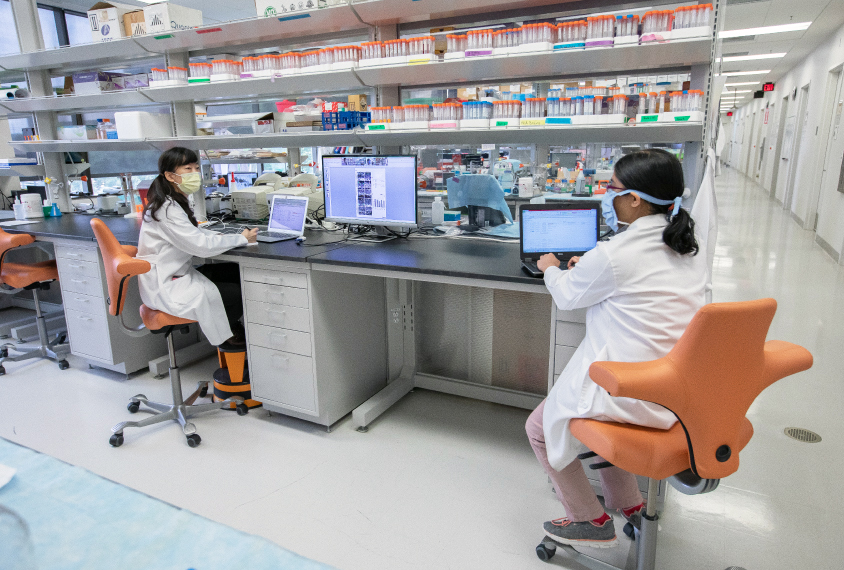
Inside the reporter’s notebook: Dispatches from 2020
Spectrum‘s staff couldn’t report on the ground this year — with no lab visits, sit-down interviews or in-person conferences to attend — but we observed a lot of changes from our computer screens.
Spectrum’s staff couldn’t report on the ground for much of this year — with no lab visits, sit-down interviews or in-person conferences to attend — but we observed a lot of changes from our computer screens. And as we adapted to reporting from afar, we saw the community we cover adapting, too — in ways that will likely affect autism research for years to come.
One feature of pandemic reporting has been how our interviews with scientists now begin: No one is comfortable jumping into business without checking on each other first. As the novel coronavirus took hold in New York City, Spectrum’s home base, in March, researchers consistently asked us how we were doing (okay), what the case numbers were like (terrible) and whether we had been able to go outside (maybe for a quick walk).
Researchers squeezed in interviews, in between childcare and other household responsibilities. Autistic self-advocates told us about heightened anxiety and major disruptions to routines. And clinicians described how they were troubleshooting telehealth platforms and even meeting autistic clients in parking lots to continue services and keep them safe.
Our conversations often turned to one of several recurring themes. For starters, COVID-19-related travel restrictions put a damper on some early-career researchers’ opportunities. The travel restrictions at least temporarily blocked one postdoctoral researcher in Jonathan Sebat’s lab at the University of California, San Diego, for example. Other young scientists expressed concern about a fast-narrowing job market as a result of the pandemic.
And many long-term research projects were put on hold — at a significant cost, in some cases. In February, Gavin Rumbaugh’s team at Scripps Research in Jupiter, Florida, was getting ready to fire up a new high-throughput drug-screening platform: They had built up their mouse colony, finished a pilot screen and renewed their grant to cover the expense.
“We’re flying,” Rumbaugh says. “And then COVID hits, and we’ve got to cull our colony.” They are just now rebuilding the colony, and they plan to start screening back in the lab in January or February of 2021 — almost a full year behind schedule.
Remote reality:
Despite the challenges, though, some changes were positive. Several researchers working with people extolled the benefits of telehealth, including making visits easier for autistic children and their families.
And remote research made some studies more accessible to some autistic participants as well — although it may deepen technological divides for people without access to reliable internet connections, says Liz Pellicano, professor of educational studies at Macquarie University in Sydney, Australia. “Moving our research online might well make our research more accessible to some autistic people, but it also might make it less accessible to those who are already from seldom-heard groups.”
We missed covering conferences in person in 2020, but remote meetings had their upsides. To cover the International Society for Autism Research, American Society for Human Genetics and SYNGAP1 meetings as they moved online, we pored over virtual abstract books, scanned chat rooms and Twitter — and sent a lot of emails. We found that moderated question and answer sessions made for briefer, more direct inquiries; there were no “more of a comment than a question … ” follow-ups at any of the talks we saw. And many researchers sent us slides, preprints and even prerecorded talks beforehand, which helped us prepare for their sessions.
Virtual conferences also meant more international attendees, whom we interviewed late at night or in the wee hours of the morning to account for our different time zones.
The pandemic led to some novel art for our stories. Most scientists were game to explore pandemic-friendly photo shoots — we photographed them through windows, outdoors, using drones and via video calls. And when that didn’t work — some portrait subjects were recovering from illness and unavailable for in-person shoots; others were under strict lockdowns — we turned to collage art, using existing photos.
Working from home has meant that we all, inevitably, brought some of our home life into our professional life. Zoom calls had us peering into one another’s living rooms and home offices. Noisy children and pets interrupted our conversations and sometimes made surprise appearances. Researchers opened up about their struggles to balance work with childcare, and we shared our fears about the virus’ spread and our hopes for the vaccines.
We will be glad to have this pandemic behind us, but there has been something comforting about seeing one another not just as researchers and reporters, but as caretakers, neighbors and partners — all doing our best to make it through a difficult year.
Recommended reading

Expediting clinical trials for profound autism: Q&A with Matthew State

Too much or too little brain synchrony may underlie autism subtypes
Explore more from The Transmitter

Mitochondrial ‘landscape’ shifts across human brain

